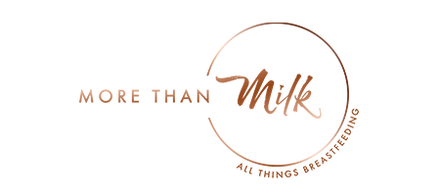Unimom Troubleshooting
FORTE: Place finger over the connector on the pump. Is there any suction at all? No? Unplug pump and unscrew the tip lid off. Look for a clear silicon hose on the inside and place the disconnected end onto the connector on white cylinder and the other end onto the black connector on front panel to ensure both ends are sealed. Check nothing is laying loose inside. (NEVER TOUCH THE INSIDE OF PUMP WHEN PLUGGED IN)
Yes there is slight suction but weak? Check all consumable parts for damage by separating each part (Shield kit). These can be damaged during cleaning. Two important parts to check are:
White wedge shaped valve (1st picture)-The slit should be tight and small not reaching both sides of the valve and should suckright in when the pump is on and there is a seal over the breast shield.
Milk back flow protector unit (2nd picture). Pull apart and check round silicon disk has no dented edges. Reseal and test while breast shield has a seal on it. The silicon membranes should be increasing in height as you turn the suction up and also synchronising with each other. Listen for a hissing sound coming through the unit. If it is hissing, there is an air leak and customer will need to purchase a new one.
Put everything back together and test for suction improvement.
Cleaning and Sterilising Your Equipment
Sterilise all breast shield parts. The milk back flow protector unit does not come into contact with breast milk and can be washed every 2nd day. Air does go through it causing condensation, so needs to be washed and dried well if going to be left sitting for longer than 2 days. If you emerge the airtube in water, make sure you hang it up so that all drips have drained out and the hose is completely dry again.
1. The safest and easiest way to sterilise your breast shield kit is wash in hot soapy water. Place all parts onto a clean, drying rack and pour boiling water over the lot. Leave to air dry or shake dry.
2. It is safe to wash parts in the dishwasher as long as they are not near the element.
3. Place parts in a pot and cover with water. Bring to the boil. Boil for 2 minutes. Remember to set your timer!
4.Place in dishwasher and leave them in for steam dry. Ensure there is not food residue stuck in shield parts. If so then pour boiling water over the lot.
5. Microwave sterilising does have risks. The bottom part of the back flow unit is a heavier plastic and prone to tip over and melt. Microwaves can spread heat unevenly, or not match the wattage the steriliser is designed for. If any damage happens, it is likely when sterilising for more than 2 minutes
6. Sterilising in a chemical solution may cause the plastic to deteriorate quicker.
Handy Tip: If you are a very busy mum who exclusively pumps, because breast milk is antibacterial, you can put your parts in a clean bag into the fridge after each pump and sterilise at the end of the day.
*Ensure every part is thoroughly dry before use to get a good seal.
CALCIUM BUILD UPS:
If you live in an area with hard water that causes calcium build ups in the small parts of your breast shield and hot soapy water does not get rid of it: Soak in vinegar or lemon juice or both together and wash with a bottle brush and rinse.
If parts are damaged or worn out, replacements can be purchased at very affordable prices through our supplier.
Although this information is relevant for most breast pumps we recommend the Unimom range of Breast pumps and stock the Unimom Forte as our preferred choice for Hospital grade breast pumps. We also stock the Unimom Minuet as a quality portable alternative.
